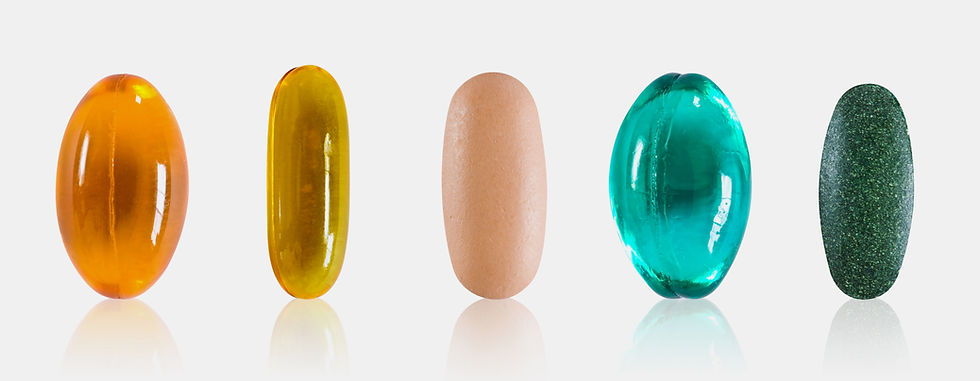Benefits of Vitamin D for Health and Menopause
- Ideal Weights

- Feb 4, 2021
- 3 min read
How are your nutrient levels? When we age and our metabolism changes so do our various nutrient levels. Vitamin D – the sunshine vitamin – is so important to our bodies.

As women age, we gradually produce less estrogen, this time is called perimenopause. During this transition we may experience symptoms such as.
hot flashes
vaginal dryness
night sweats
weight gain
mood swings
insomnia
Vitamin D has proven to be a key nutrient for helping deal with menopause symptoms. There is evidence showing that estrogen calcium and vitamin D work together to promote bone health.
When properly absorbed vitamin D supports almost all our body functions and helps to prevent osteoporosis, certain types of cancers, depression, diabetes, and obesity.
Now, sunlight is the optimum way of getting vitamin D; however, because it is actually difficult to get enough sun exposure and proper absorption, supplementation helps individuals obtain optimal levels. It is important to note that applying sunscreen also blocks out the skins ability to absorb vitamin D. If you are planning on an extended period of sun exposure take time to use skin protection, but short periods daily will help you have optimum levels.
Unfortunately, most of us do not get enough sun and are deficient in Vitamin D. The recommended daily value is 800 IU per day from food.
Vitamin D depletion is problematic, especially in overweight patients with an elevated body mass index – for a poor BMI impairs vitamin D circulation. Absorbing and maintaining vitamin D levels is especially challenging for older patients. Low blood levels of vitamin D (serum 25-OH) correlates well with the incidence of nearly every major inflammatory disease.
Vitamin D modulates permeability of the gut lining as well as the blood brain barrier. It also helps to create tight junctions in these semi-permeable barriers throughout the body. The enzyme that activates the 25-OH form into the active form of vitamin D is produced in the kidneys and is a magnesium dependent enzyme. It is important to make sure to take magnesium before vitamin D. I recommend a D3 supplement for those who have difficulty achieving peak vitamin D levels. It is also important to ensure you are eating a healthy whole foods diet each day.
Several types of fish contain vitamin D, but many people including myself prefer not to eat fish so luckily seafood is not the only source. Whole eggs are a nutritious whole food that can provide you with a good amount of vitamin D. It is important to know you must eat the whole egg, the whites contain most of the protein and the fats, vitamins and minerals are found mostly in the yolk.
Mushrooms are a plant source of vitamin D2. Plants produce vitamin D2 where humans produce vitamin D3. While we need D3, wild mushrooms can help raise the blood levels of vitamin D. There are also several food items that are fortified with vitamins and minerals. Make sure you are reading labels and eating a clean diet.
It is important to consult with your physician regarding your current vitamin D levels and whether it is necessary to increase or decrease your intake. The normal vitamin D range is between 30-100 ng/ml.

Although studies aren’t completely conclusive, when a person has an adequate level of vitamin D, they tend to not suffer from health issues such as osteoporosis, depression, diabetes, or cardiovascular concerns. Women with adequate vitamin D levels tend to have less symptoms when transitioning through menopause. Vitamin D is also excellent for assisting the digestive system.
In conclusion, as we age prevention is key to maintaining our ideal lifestyle. Eating a clean diet, incorporating easy exercises, and checking in with our doctor on our vitamin levels is an important part of this. A walk outside each day can help maintain vitamin D a key player in our overall health.














Comments